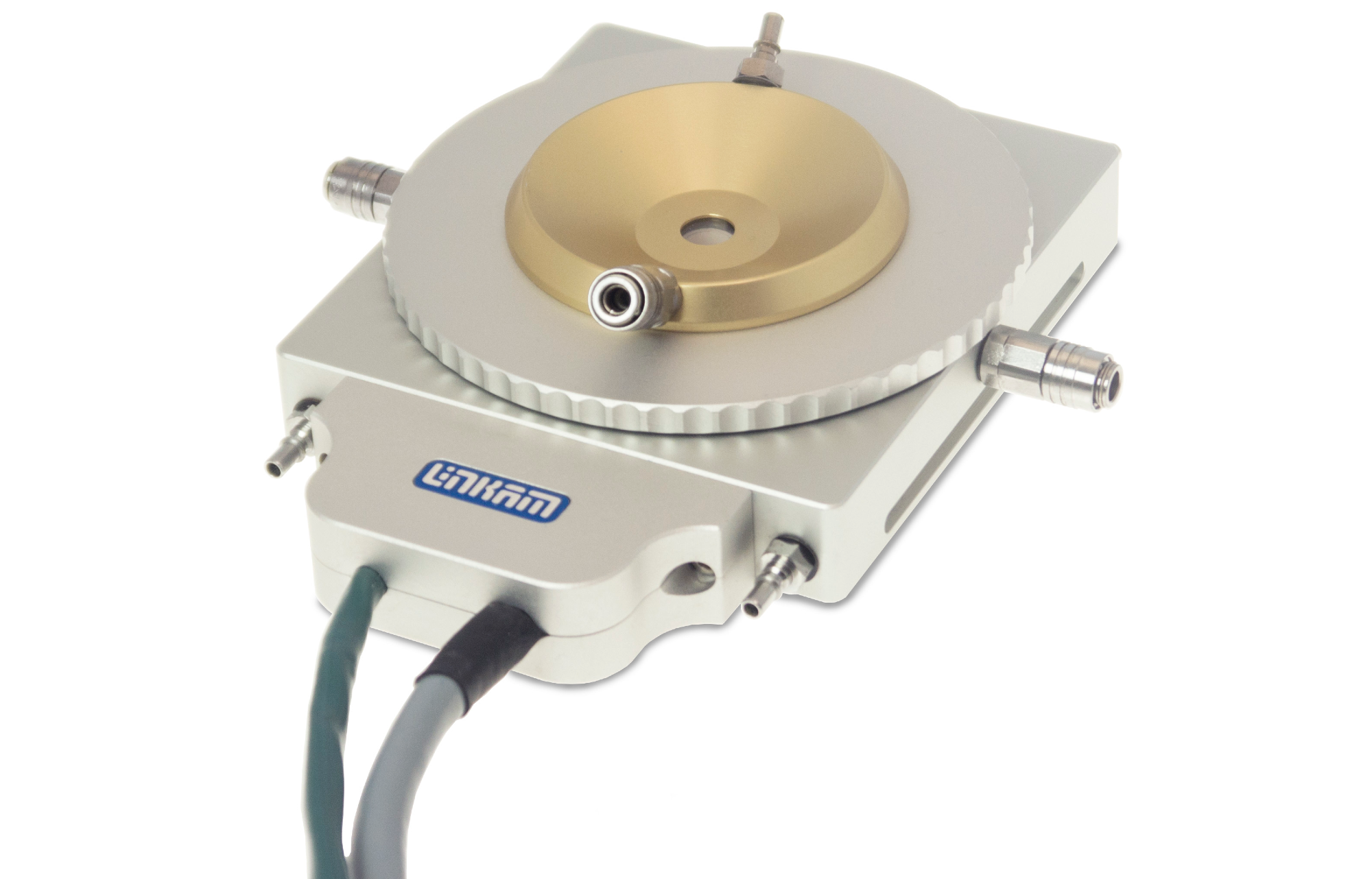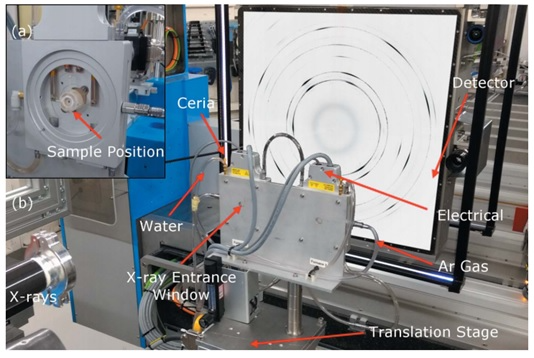Linkam’s stages are being used by researchers at Diamond Light Source, the UK’s national synchrotron, for temperature and environmentally controlled beamline analysis experiments to support research in life, physical and environmental sciences.

Beamline analysis is a vital technique used in the study of structural and crystallographic properties of materials. Based in Oxfordshire, Diamond Light Source is the UK’s national synchrotron and is one of the most advanced scientific facilities in the world. Its pioneering capabilities are helping to keep the UK at the forefront of scientific research, with over 14,000 researchers from across both academia and industry using Diamond to conduct experiments on samples varying from flexible electronics and jet engines to biological samples and or unknown virus structures.
Synchrotrons accelerate electrons to almost the speed of light and as the electrons are deflected through magnetic fields, they create extremely bright light, which is channelled down individual beamlines to experimental workstations where it is used for research. Diamond is the UK’s largest synchrotron with a ring circumference of 783 m and an operating power of 3 GeV hosting 32 beamlines, with further expansion planned in the near future. Each beamline is customised to utilise a specific wavelength, beam size and energy of the incoming radiation, which is chosen for its suitability for specific beamline analysis techniques ranging from X-ray Diffraction (XRD) and Small/Wide Angle X-ray scattering (SAXS/WAXS) to X-ray Absorption Spectroscopy (XAS) and X-ray Fluorescence (XFS), and many more. Each beamline further supports in-situ and environmental control, utilising temperature, humidity, pressure and vacuum sample chambers.
Linkam has worked with Diamond since it opened in 2001, providing temperature and environmental stages year after year both directly to Diamond and to researchers renting time on the beamline. Duncan Stacey, Sales and Marketing Director at Linkam comments: “Linkam’s stages, such as the THMS600, DSC600 and TS1500, can be installed directly in the beamline for temperature or environmentally controlled beamline measurements, as well as mechanical sample manipulation using the MFS. We are proud to have always worked closely with Diamond and the researchers who use their beamlines to provide solutions to experiments requiring temperature and environmental control. Standard and customised Linkam stages are used in a variety of X-ray applications and can be found in most Synchrotron facilities around the world.”
The wide range of beamline techniques enable researchers from a variety of disciplines to utilise Diamond Light Source. Examples include: using SAXS to study the crystal structure of organic solar cells, which correlates directly with their efficiency; looking at the properties of antiferromagnetic materials using X-ray manometry; unravelling properties of new molecular structures such as “bucky nano-diamonds” with XRD; or looking at the protein structures in human cells through Protein Crystallography.
Diamond’s 32 beamlines are used to develop cutting-edge techniques used for pioneering new research projects. One such system is the new long-duration experiment facility at Diamond, which has been used to study the kinetics of sigma phase formation in three Cr–Co–Ni alloys. Diffraction data acquired during in situ exposure at 800 °C for 50 days showed progressive increases in the sigma fraction. This was accompanied by changes in the proportions of the other phases, which differed markedly between the alloys studied. Two Linkam TS1500 stages were used to manage the temperature and environmental control in the study, the experimental configuration and the stages are shown in Figure 1

Figure 1. Image of the experimental configuration: (a) magnified view of a Linkam TS1500 furnace with exit window removed; (b) overview of the experimental apparatus in the I11 LDE hutch including a schematic two-dimensional powder diffraction pattern overlaid on the area detector. Image used with Creative Commons Attribution (CC-BY) Licence.1
Linkam also offers stages that can be used adjacent to beamline techniques. For example. Linkam’s Cryo-Correlative Microscopy Stage (CMS196) uses cryo-fluorescence microscopy to help localise structures of interest in samples for high resolution cryo electron microscopy imaging. Diamond currently has a number of CMS196 at the facility and two collaborative projects running based around the stage. One of the collaborations uses the CM196 to image fluorescence samples at cryogenic temperatures for super resolution 3D structured illumination cryogenic fluorescence microscopy for correlated ultra-structural imaging.2
Linkam has close contact with many other synchrotron facilities around the world, including Oak Ridge, Argonne and SLAC in the US, CERN in Switzerland, ESRF in France, Max IV in Sweden and ALBA in Spain and Spring8 in Japan.
References
[1] J Synchrotron Radiat. 2018 Sep 1; 25(Pt 5): 1371–1378. Published online 2018 Aug 13. doi: 10.1107/S1600577518009475 Available at: https://journals.iucr.org/s/issues/2018/05/00/fv5084/fv5084.pdf
[2] CryoSIM: super resolution 3D structured illumination cryogenic fluorescence microscopy for correlated ultra-structural imaging (Preprint) 2020 bioRxiv. DOI: https://doi.org/10.1101/2020.03.09.980334